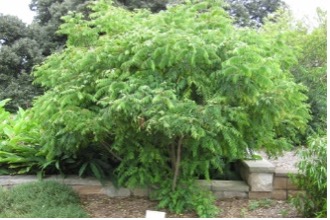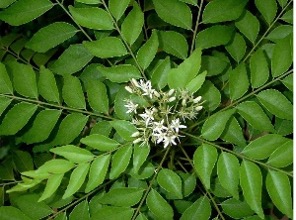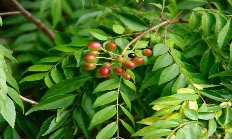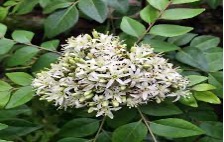HERBAL GARDEN
Vivek college of Ayurvedic Sciences & Hospital Bijnor UP
मीठी नीम




Classification
Synoyms
गिरिनिम्ब
कृष्णनिम्ब
कर्मुक
Habit
Small evergreen tree or shrub.
Habitat
Native to India and Sri Lanka, grows in tropical and subtropical climates, commonly found in gardens, backyards and wild in forested areas. Cultivated across India for culinary and medicinal use
Morphology
- Grows up to 4–6 meters in height
- Leaves are compound, alternate, pinnate with 11–21 leaflets; aromatic when crushed
- Flowers are small, white and fragrant
- Fruits are small, black, shiny berries.
Chemical Composition
Alkaloids: Mahanimbine, Koenimbine
Essential oils: Caryophyllene, Linalool, Myrcene
Flavonoids
Glycosides
Carbazole alkaloids
Minerals: Iron, Calcium, Phosphorus
Vitamins: A, B, C, E
Guna-Karma
Rasa-Tikta, Katu
Guna- Laghu, Ruksha
Virya- Ushna
Vipaka- Katu
Karma- Deepana, Pachana, Krimighna, Rochana, Raktashodhaka, Vranaropaka
Doshakarma- Kapha-Vatahara
Medicinal uses
Improves digestion and appetite.
Used in nausea, vomiting and diarrhea.
Beneficial in diabetes due to hypoglycemic effect.
Hair tonic – prevents premature greying and hair fall.
Used in skin disorders, bruises and insect bites.
Strengthens liver and helps in anemia due to iron content.
Useful Part
Leaves (fresh or dried), Root, Bark
Doses
Fresh leaf juice: 10–15 ml
Powder (leaf): 1–3 g
Decoction: 20–40 ml
Important Formulation
Kariveppilai Chooranam
Kadipatta Ark
Shloka
कृष्णनिम्बो लघुः तिक्तः कटुकोष्णः कषायवान्।
दीपनः पाचनो ग्राही कृमिघ्नो लघुपाचनः॥ (भावप्रकाश निघण्टु – हरितक्यादि वर्ग)
Hindi Name
कड़ी पत्ता
English Name
Curry Leaf / Curry Tree
Botanical Name
Murraya koenigii (L.) Spreng.
Family
Rutaceae